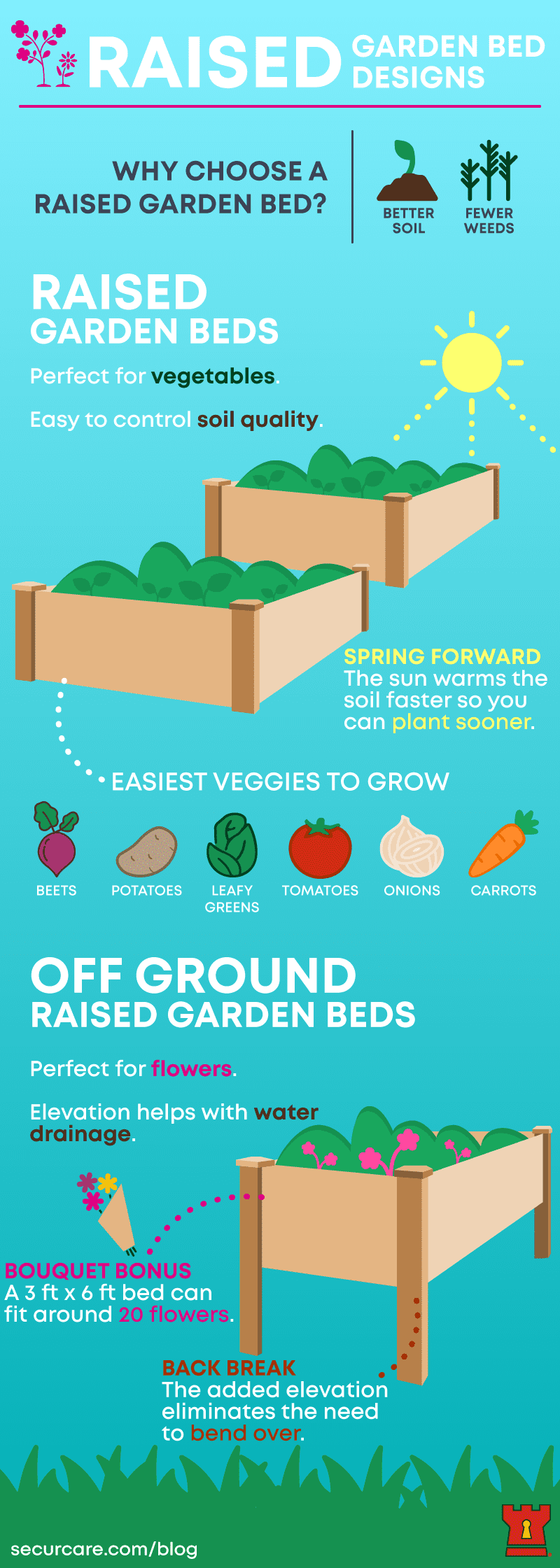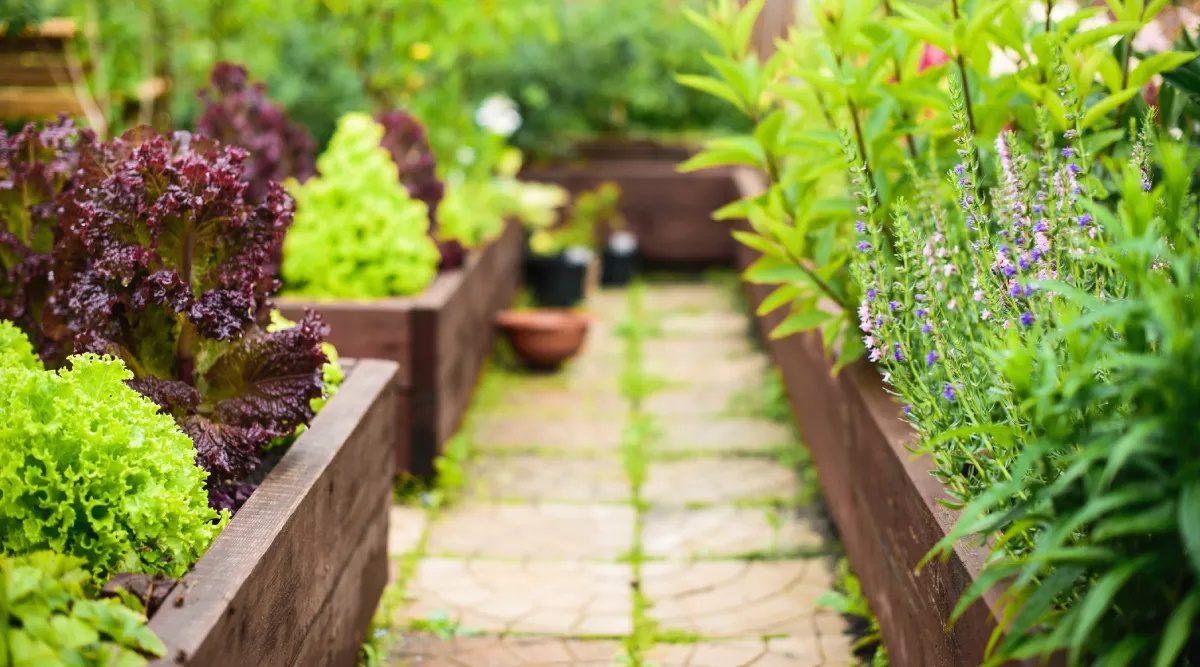
Why Choose a Raised Garden Bed?
A home garden brings joy, satisfaction, and delicious food to those who take the time and care. However, that time and maintenance can be significantly reduced with a raised garden bed instead of a traditional garden bed. How? Let’s take a closer look.
Start Growing Earlier in the Season
Since they’re above the ground, Raised garden beds can be used earlier in the season to grow plants and flowers. That’s because the ground isn’t frozen stiff! The sun warms it up faster than a regular, in-ground garden.
Better Soil Control
With a raised garden bed, you can control the soil quality much more easily. It’s a smaller amount of soil, to begin with, and so more manageable. Your soil can also be swapped out, cared for, and fertilized more quickly and efficiently than a traditional garden.
Better Drainage
They drain faster than a regular garden because it’s elevated. That’s good news because your flowers and veggies won’t drown if you over-water them. It also makes it easier to know when and how much watering they need. Plus, with a smaller area to care for, you won’t waste precious water.
No Bending Over
One of the biggest problems many people have with a regular garden is that they need to bend it to tend it. Their back can get sore and stiff, especially after a few hours of gardening duties. With a raised garden bed, though, you’ll bend over less, which means less back pain and more enjoyment.
They’re Perfect for Flowers
They are perfect for flowers of all kinds. They look more attractive, protect them from critters and let you create the ideal growing environment. Plus, as we mentioned earlier, no bending down to enjoy or cut them!
How to Build a Raised Garden Bed
There are, to be sure, many ways to build a raised garden bed. You can make one that sits directly on the ground or has legs to be raised even higher. Below is a basic guide to building a one that sits on the ground.
- Measure and cut the walls and posts for the raised garden bed based on the size you desire. The posts should be the height of the walls. Also, if it is long, consider cutting some posts for placing mid-wall on each side.
- Clamp the 4 walls separately, both long sides and short sides.
- Attach the posts using nails, screws, or dowels. (Screws are easiest. Drill pilot holes if you choose them.) It’s recommended that the posts be placed on the inside of the raised garden bed.
- Place the raised garden bed in your yard where it will get sufficient sun for what you’re growing.
- Fill with nutritious soil and natural fertilizer.
- Grow crazy with the flowers, veggies, and herbs!
The Best Soil for Raised Garden Beds
Most people in the United States use a 50/50 mix of topsoil and compost when building a raised garden bed. Some use a third ingredient, which is peat moss (aka black loam). Compost is the most important. It holds moisture and will provide vital nutrients to your future plants and flowers. (You can purchase everything at your local garden center.)
Most experts recommend against using dirt from your yard. (It doesn’t have the nutrients.) Also, it’s highly recommended that you create your own compost using organic material from your kitchen. (Fruit rinds, eggshells, coffee grinds, vegetable and fruit peels, etc.) It’s easy-ish and lets you put that throwaway food to good use
The Easiest Vegetables To Grow In a Raised Garden Bed
You can grow practically any vegetable you like in a raised garden bed. Some, however, are a bit easier than others. Below is a list of the easier veggies to grow, including:
- Beets
- Potatoes
- Tomatoes
- Leafy greens. (Lettuce, kale, etc.)
- Onions
- Carrots
Storing Your Extra Building Materials
Depending on your home’s size, you may not have the room to store extra building materials, supplies, and tools. That’s when a storage unit can come in very handy. Safe, secure, and easy-to-access, a storage unit is an affordable storage option. Plus, you can store all your gardening and lawn care supplies there in the off-season!
This post was originally published 07/25/2019. It was updated 11/09/2021.
